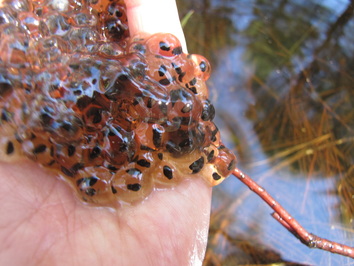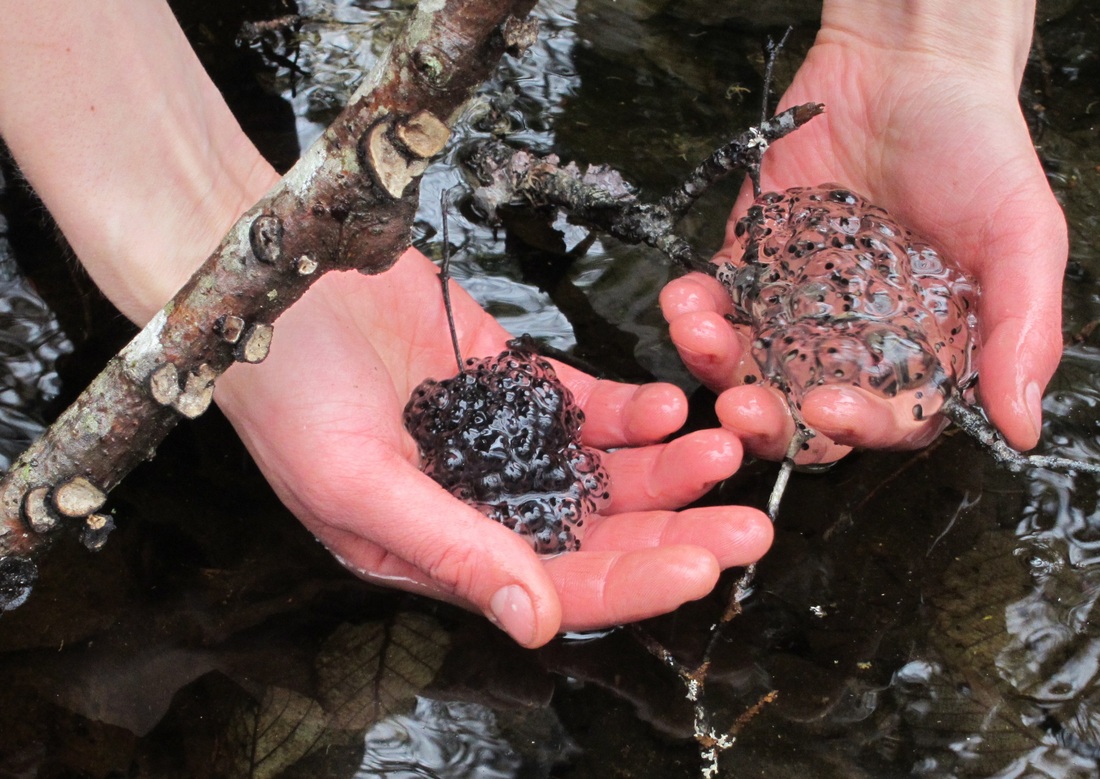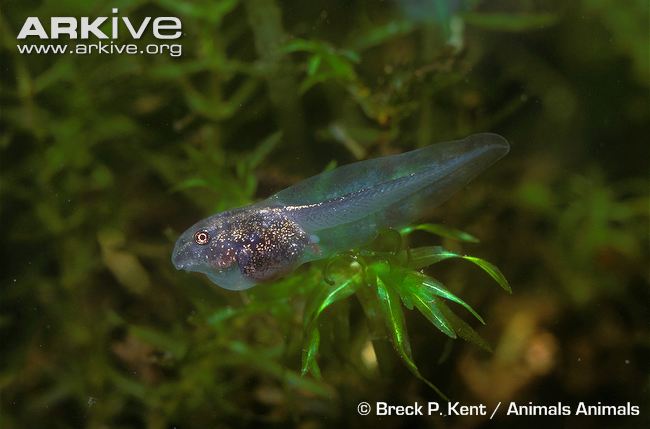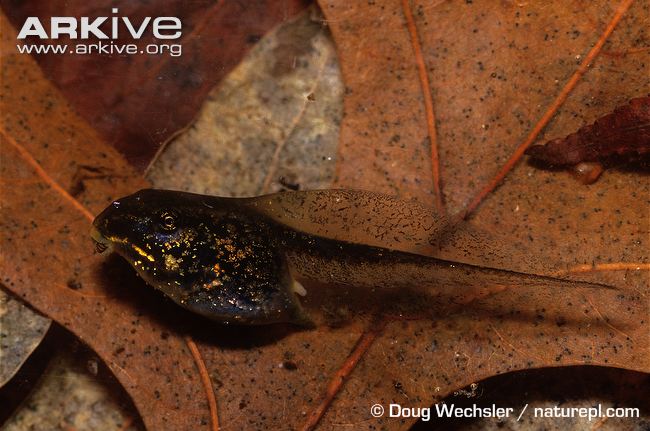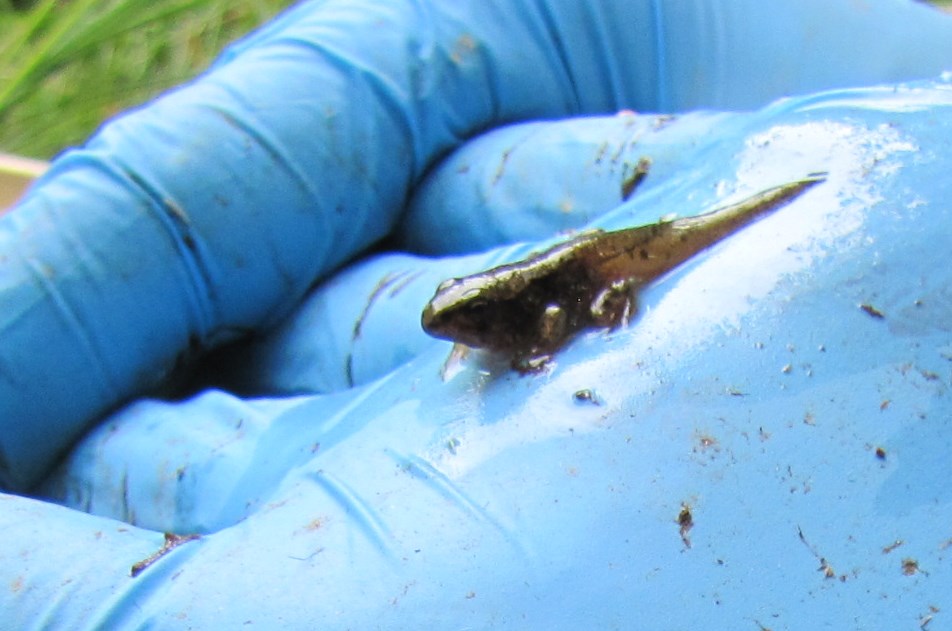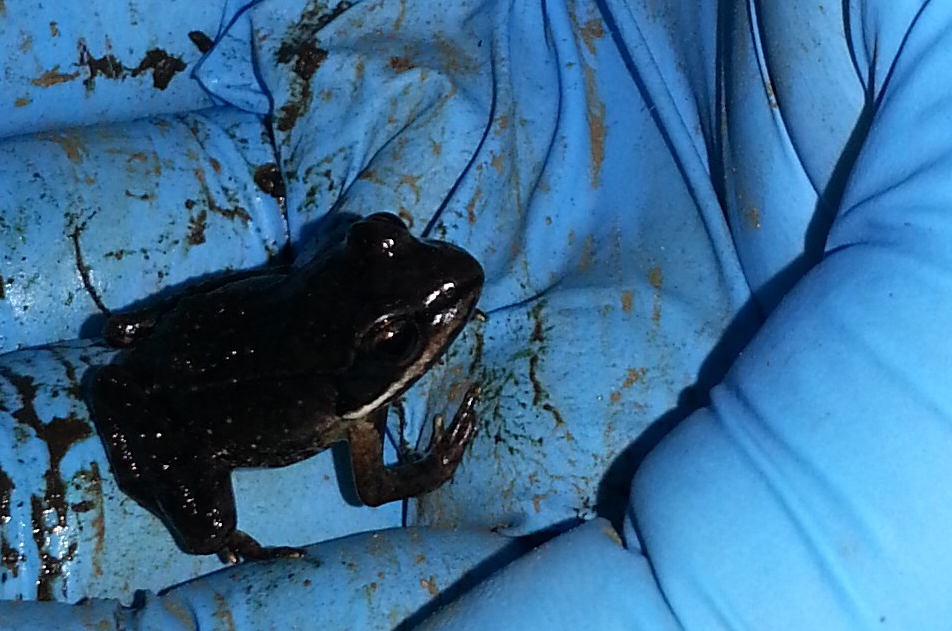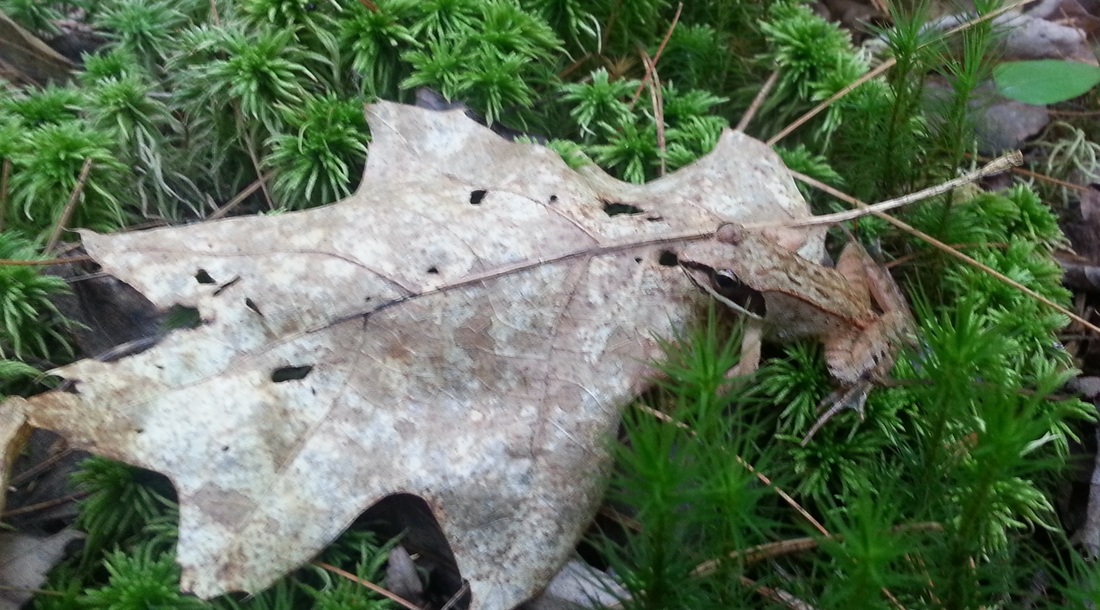By Diane Dunham, Undergraduate Research Assistant, University of Maine and Carly Eakin, Graduate Researcher, University of Maine
Have you ever considered how a tadpole becomes a frog? It is a truly remarkable process which generates a “finished product” that looks and behaves much differently than the larvae that hatched from eggs. Looking at a mass of newly laid wood frog eggs, you would hardly guess at the amazing transformation about to take place. Within a couple months these eggs hatch fully aquatic (water dwelling) tadpoles which will shortly leave the water and become primarily terrestrial frogs.
In Maine, wood frogs lay masses of up to 1,000 eggs in spring – usually during May. The egg masses start out quite small – after all, those eggs must be laid by a female frog that can easily sit in the palm of your hand. After only a few days, each egg mass expands many times over, until it is far larger than its respective mother.
In three to four weeks (June) the developing tadpoles release a hatching enzyme that begins to dissolve the eggs in which they have spent the first stage of their lives. As the tadpoles emerge from eggs they need to grab onto the remaining egg mass or nearby vegetation so they do not sink to the bottom of the pool. You may wonder: How do they hold on without feet or a mouth? They secrete sticky mucus from an adhesive organ. While ‘hanging out’ here, they develop a tail, mouth, and muscular coordination. They may have short bodies, delicate external gills, and no eyelids, but they are ready to wriggle and eat. At this point in their development, they are largely herbivorous (plant eating) and use their round sucker-like mouths to gobble up particles of food stuck to vegetation or suspended in the water. The new tadpoles also feed on the protein-rich jelly of the remaining egg mass.
As the tadpoles develop, their external gills regress, internal gills are formed, and they become more mobile. The tadpoles are still rather vulnerable and may remain near the shelter of the remaining egg mass until it disintegrates.
Many visible changes occur throughout larval development. The abdominal skin of the young tadpoles is translucent. A couple weeks after hatching, it is still possible to see a tadpole’s lungs, heartbeat, and a spiral of intestines.
As the tadpoles mature they begin to grow legs. Hind limbs develop first, starting out as only a tiny bump or bud.
The buds elongate into legs, and then hind feet begin to form, first as a toe-less “paddle” and then eventually with individual toes. The front legs follow a slightly different strategy: the forelimbs completely develop in inside the skin and then – within a day – erupt through the skin. Talk about growing pains!
As tadpoles continue to metamorphose into terrestrial frogs, their gills degenerate, their skin thickens, and they get “frog faces”. Rounded larval mouthparts transition into larger and wider adult mouths – complete with the typical frog tongue that is attached in the front of the mouth. Their eyes enlarge, eyelids develop, and tails reabsorb. If this wasn’t enough, their digestive systems completely reconfigure to allow for the carnivorous diet they will have once they are terrestrial. Metamorphosis is such an energy intensive process that by the time they emerge from pools as terrestrial froglets – typically in July or August – they will actually be shorter and weigh less than a few days earlier when they were tadpoles.
Metamorphosis is now complete and the former tadpoles have transformed into terrestrial juvenile wood frogs with four legs, no tail, lungs, and bones. Froglets are carnivorous and will eat a diet which may include insects, arachnids, slugs, worms and snails. For the remainder of their lives, these frogs will reside in woodlands for all but for a short period in the spring when they return to vernal pools to breed, and their young can repeat this amazing transformation.
Bibliography
Duellman, W., and L. Trueb. 1994. Biology of Amphibians. Johns Hopkins University Press, Baltimore.
Gosner, K. L. 1960. A Simplified Table for Staging Anuran Embryos and Larvae with Notes on Identification. Herpetologica 16:183-190. <http://www.jstor.org.prxy4.ursus.maine.edu/stable/3890061>.
Reece, J., L. Urry, M. Cain, S. Wasserman, P. Minorsky, and R. Jackson. 2011. Amphibians. Pages 710-712 in B. Wilbur, editor. Campbell Biology. 9th edition. Pearson.
Relyea, R. A. 2001. Morphological and Behavioral Plasticity of Larval Anurans in Response to Different Predators. Ecology 82:523-540. <http://www.jstor.org.prxy4.ursus.maine.edu/stable/2679877>.

